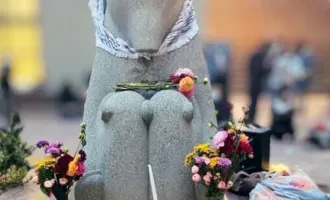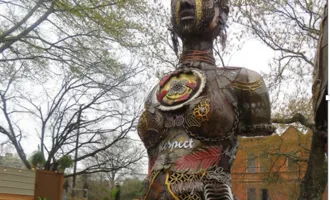
This Date in UCSF History: Refugees Counsel Compatriots
Originally published in Synapse on May 26, 1988.
Case: A 29 year-old Salvadoran woman, mother of three, is unable to speak about her experiences in El Salvador. She has been in San Francisco for three years and is currently eligible for temporary residency under amnesty laws.
When asked to tell her story she becomes so agitated that she is unable to explain the reasons why she was compelled to flee her country. Although she was not physically harmed, she was harassed and witnessed the brutal murder of close relatives.
When she is able to relate her story, it is usually in a flat monotone voice, with blunted affect and little emotion. Her lawyers are concerned that when she is summoned to appear for her asylum hearing, the presiding judge will be unconvinced and not rule in her favor.
With the increasing political turmoil in Central America the numbers of refugees has been steadily increasing since the 1980s. Estimates of undocumented Central American refugees in the San Francisco area range from 60,000 to 200,000.
And while a stroll in the Mission district may lead one to believe that the vast majority of Central Americans have adapted well, this seemingly tranquil veneer disguises the numerous expressions of cultural distress faced by refugees. Mental health professionals working with undocumented refugees believe that nearly the whole population is vulnerable to emotional and psychological disturbances.
As the above case suggests, many undocumented Central American refugees suffer from hidden injuries. An experience of torture may be relived over and over, resulting in sleeping and eating disorders, alcohol abuse, or transitory psychotic episodes. This is recognized by the psychiatric community as Post Traumatic Stress Syndrome.
Chronic anxiety is another significant problem that undocumented Central American refugees experience, and not without cause: they are always at high risk of being arrested and deported by the Immigration and Naturalization Service, known as “La Migra.” But for Central Americans in need of emotional and psychological support there are few services to turn to.
Public mainstream mental health services are only available to those who are experiencing an emergency or who have a chronic disability. In the private sector there are only a handful of mental health programs that are culturally appropriate.
The Central American Mental Health Promoter Program was established a year ago to meet the special psychological needs of these refugees. Known in the Latino community as los promotores de la salud mental, it was designed to train Central American refugees to work in their own communities.
Drawing on the public health model of disease prevention and health promotion, refugees are taught basic mental health skills that they can adapt to the needs of their community. Training is in counseling, basic psychiatric and psycho-social assessments, and crisis intervention. The program has been sponsored by the Coalition To Aid Refugee Survivors of Torture and War Trauma and the Bay Area Committee for Health Rights in Central America.
With minimal funds and a great deal of volunteer work, the training program is currently in its second year. It has graduated one group of 13 and is currently training 14 promoters. The first group of promoters consisted of five men and eight women, ages ranging from 22 to 61.
All had witnessed dead bodies, often mutilated, all had experienced the loss of loved ones either through disappearances or outright murder. All had been persecuted in some way, eight had to escape from civil authorities, six were on death-squad lists, three had been incarcerated and beaten repeatedly, and two were systematically tortured.
In the year since the program began, all the promoters have expressed a greater understanding of what they and other Central American refugees have experienced. As para-legals, sanctuary workers, community organizers and political activists, they are able to mobilize the social resources that are available to aid refugees who are in greatest need.
For all involved, the most important outcome of the training is that a healing process has begun. In facing their own refugee experience, their own scars and wounds, the mental health promoters are feeling able to face the pain of their own lives and thus better help others do the same.
Although the program remains at a formative stage of development, it promises over time to become established as a grass-root mental health preventive service located among the Central American refugee community.



